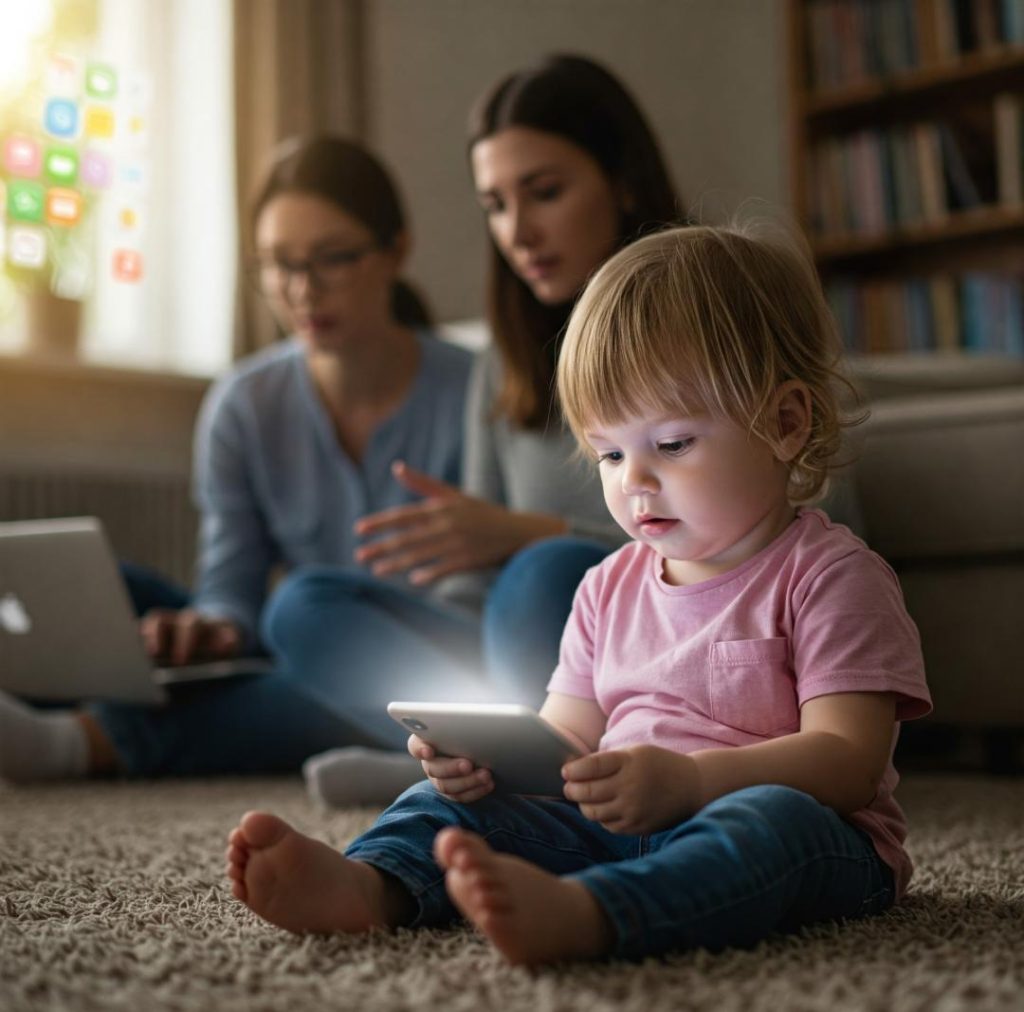
Parenting, Screens & Conditioning: A Digital Age Concern
In today’s digital age, parenting has become a complex task, especially when it comes to regulating screen time for children. With the rise of smartphones and social media, it’s not uncommon to see kids glued to screens for hours on end. However, a recent incident in Jammu & Kashmir highlights the alarming reality of poor screen regulation and lack of parental interaction. A child was found watching adult content on YouTube despite having “restricted mode” enabled, leaving parents and educators alike wondering how this could have happened and what can be done to prevent it in the future.
This incident serves as a wake-up call for parents to re-evaluate their approach to screen time and to recognize the importance of active involvement and emotional bonding in shaping their children’s behavior. As we navigate the challenges of parenting in the digital age, it’s essential to understand the impact of screens on children’s behavior and development.
The Impact of Screens on Children’s Behavior
Research has shown that excessive screen time can have a range of negative effects on children’s behavior, including:
- Aggression and irritability
- Delayed social and emotional development
- Decreased attention span and impaired cognitive function
- Increased risk of obesity and sleep disorders
- Negative impact on mental health and well-being
Moreover, excessive screen time can also lead to addiction, which can have long-term consequences for children’s mental and physical health. According to a study published in the journal “Pediatrics,” children who spend more time watching screens are more likely to experience symptoms of addiction, such as withdrawal and cravings.
Classical Conditioning and Smartphone Addiction
So, what drives children to spend so much time on screens? One key concept to understand is classical conditioning, a psychological phenomenon first identified by Ivan Pavlov. In simple terms, classical conditioning is the process by which we learn to associate certain stimuli with a particular outcome or reward. In the context of screens, this means that children may learn to associate screen time with feelings of relaxation, excitement, or escape, leading to a conditioned response to seek out screens whenever they feel stressed, bored, or anxious.
This is where mindful parenting comes in. By being aware of the ways in which screens can condition our children’s behavior, we can take steps to break the cycle of addiction and promote healthier habits. This includes setting limits and boundaries around screen time, encouraging physical activity and outdoor play, and engaging in activities that promote emotional well-being and social connection.
Mindful Parenting in the Digital Age
So, what does mindful parenting look like in the digital age? Here are a few strategies that can help:
- Set limits and boundaries: Establish screen-free zones and times, such as during meals, before bedtime, or during family activities.
- Encourage physical activity: Engage your child in sports, dance, or other physical activities that promote exercise and social interaction.
- Model healthy behavior: As a parent, it’s essential to model the behavior you want to see in your child. Avoid excessive screen time yourself, and engage in activities that promote emotional well-being and social connection.
- Engage in activities that promote emotional well-being: Encourage your child to express their emotions and engage in activities that promote emotional well-being, such as art, music, or yoga.
- Practice active listening: When your child is upset or distressed, practice active listening by validating their emotions and providing comfort and support.
The Role of Parent-Child Interaction
Another key aspect of mindful parenting is parent-child interaction. Research has shown that children who receive more attention and emotional support from their parents are less likely to engage in problem behaviors, including excessive screen time.
As parents, it’s essential to prioritize emotional bonding and interaction with our children. This can involve:
- Spending quality time together: Engage in activities that promote social connection and emotional bonding, such as reading, playing games, or cooking together.
- Active listening: Practice active listening by validating your child’s emotions and providing comfort and support.
- Emotional validation: Recognize and validate your child’s emotions, rather than dismissing or minimizing them.
- Setting clear boundaries: Establish clear boundaries and rules around screen time and other behaviors, and consistently enforce them.
Conclusion
The recent incident in Jammu & Kashmir highlights the importance of regulating screen time and promoting healthy habits in children. By recognizing the impact of screens on children’s behavior and development, and by incorporating mindful parenting strategies into our daily lives, we can help our children develop healthier habits and a more positive relationship with technology.
As we navigate the challenges of parenting in the digital age, it’s essential to prioritize emotional bonding and interaction with our children, and to recognize the role of classical conditioning in shaping their behavior. By taking a proactive and mindful approach to parenting, we can help our children develop into happy, healthy, and well-adjusted individuals, equipped to thrive in today’s tech-driven world.






